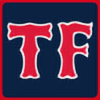HOME | DD
 Geoffrey-McDermott — Sea Swirl TF
Geoffrey-McDermott — Sea Swirl TF

#mlp #pony #tf #transformation #ponytf #seaswirl
Published: 2018-07-20 21:41:34 +0000 UTC; Views: 7122; Favourites: 91; Downloads: 72
Redirect to original
Related content
Comments: 3

You have done an incredible job again, in everything, in the background, the pony and the tf, and in the textures all very beautiful, keep it up (oh and I was wondering if I could ask for another request)
👍: 0 ⏩: 0

May I inquire on how you went about painting the fur transition on the back of the right (camera pov) hand?
👍: 0 ⏩: 1

The value shading is done with a soft round brush and a bunch of pinkish-tan-to-brown colors, and then a color mask brings in the fur’s hue where necessary. Nothing too fancy.
The texturing is the tricky part. I draw it in grayscale on a separate layer set to Overlay, erase (partially or fully) any texture that’s too strong, then merge it down. To do that fur painting, I have a tool preset that I’ve been tweaking for a few months. Every tuft it drawn individually, but the process is semi-automated to have what I consider to be an ideal amount of randomness in the coat. The individual tuft shape comes to a fairly sharp point, but closer to its base it fades to nothing. The brush itself is animated just barely; it randomly cycles between a bunch of tufts that are rotated by a few degrees to give some rotational randomness, and I think the default spacing I have saved is, like, 10% of brush size.
The brush dynamics are custom; the angle is set to match stylus direction (so that fur direction matches whichever way I’m ‘brushing’ it, and the only angle variance otherwise comes from the brush animation), the size is randomized (with a mapping matrix that keeps tuft size within some fairly tight bounds, but with just a bit of variance), and color is selected randomly from a gradient (in this case a black-to-white gradient, though I could, say, paint in Normal blending mode and use a light-pink-to-dark-pink gradient if I were using a different technique).
As for the other tool options, I usually have opacity close to 100%, I vary aspect ratio depending on what kind of fur I’m trying to draw (thicker tufts like those on the chest might be a ratio closer to -1.0 or -3.0, compared to -10.0 for the thigh and hand; these numbers are dependent on the brush shape used), a bit of jitter (about 1.2 to 1.5) keeps the fur from being too well-aligned linearly, and I usually work without stroke smoothing.
Obviously, this particular technique is something that requires a lot of experimentation, reading, and an intimate knowledge of how your drawing program ticks. That doesn’t necessarily make it the best, but it works for my purposes. If you’re interested in doing something similar, it’d behoove you too read up on how your preferred drawing program deals with the creation & implementation of custom brushes, brush dynamics / mapping matrices, tool options, tool presets, and blending modes.
👍: 0 ⏩: 0

















